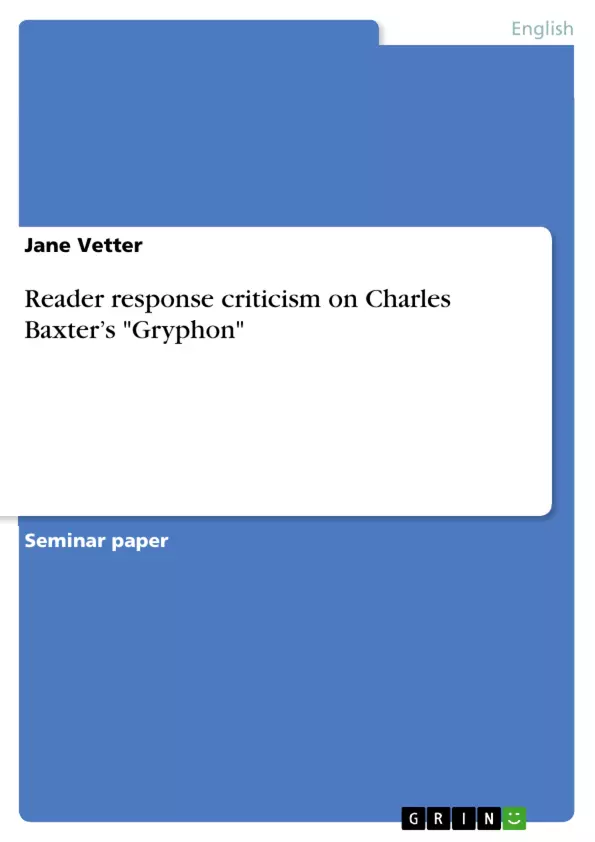Reader-response criticism is a modern way of analyzing and interpreting literature with
emphasis on the reader and not on the author or the text. As defined in The Columbia Dictionary
of Modern Literary and Cultural Criticism, reader-response criticism shifts “critical attention
from the inherent, objective characteristics of the text to the engagement of the reader with the
text and the production of textual meaning by the reader.” One of the most influential readerresponse
critics, Louise Rosenblatt, informs the reader that previous, historical forms of literary
criticism primarily focused either on literature as a reflector of reality or “the relationship
between the poet and his work.” Rosenblatt explains that critics perceived the reader as a passive
recipient, outshone by the author and the text; the reader became invisible.
Since the 1960s, as stated in The Columbia Dictionary of Modern Literary and Cultural
Criticism, the school of reader-response criticism has formed, and, as Peter Rabinowitz,
professor and chair of Competitive Literature at Hamilton College, illustrates, “became
recognized as a distinct critical movement […], when it found a particularly congenial political
climate in the growing anti-authoritarianism within the academy.” Then, most notably in the
United States, the civil rights movement started, leading citizens to plead freedom, individuality,
and nonconformity.
Inhaltsverzeichnis (Table of Contents)
- Reader-Response Criticism - Charles Baxter: Gryphon
- Introduction
- Reader-Response Criticism
- Applying Reader-Response Criticism to Gryphon
Zielsetzung und Themenschwerpunkte (Objectives and Key Themes)
This essay aims to analyze Charles Baxter's short story "Gryphon" through the lens of reader-response criticism. The author explores how the reader's personal experiences and interpretations influence their understanding of the text. The essay delves into the concept of reader-response criticism, its history, key theorists, and its application in analyzing literary works. Key themes explored in this essay include:- The Role of the Reader in Shaping Meaning
- The Concept of "Gaps" in Literature
- Subjective Responses to Literary Texts
- The Importance of Multiple Interpretations
Zusammenfassung der Kapitel (Chapter Summaries)
This essay begins by introducing the concept of reader-response criticism, contrasting it with traditional literary criticism. It highlights the shift in emphasis from the author and text to the reader's engagement with the text and their individual production of meaning. The essay then explores the history of reader-response criticism, tracing its origins to the 1960s and its rise in the context of the civil rights movement and a growing anti-authoritarian sentiment within academia. It also discusses the various reader-response theorists and their different approaches to analyzing literary texts. The essay then moves on to discuss the practical application of reader-response criticism, focusing on the short story "Gryphon." It analyzes the reader's initial impressions of the story and how these impressions develop throughout the reading experience. The essay examines how the reader fills in "gaps" in the narrative, drawing on their personal experiences and interpretations. It also explores the concept of multiple interpretations and how different readers might come to different understandings of the text.Schlüsselwörter (Keywords)
This essay explores the key concepts of reader-response criticism, highlighting the role of the reader in shaping meaning, the importance of subjective responses to literary texts, and the concept of "gaps" in literature. It examines the various reader-response theorists and their theories, including Louise Rosenblatt, Wolfgang Iser, and Peter Rabinowitz. The essay uses the short story "Gryphon" by Charles Baxter as a case study to illustrate the practical application of reader-response criticism.- Citar trabajo
- Jane Vetter (Autor), 2005, Reader response criticism on Charles Baxter’s "Gryphon", Múnich, GRIN Verlag, https://www.grin.com/document/116465



